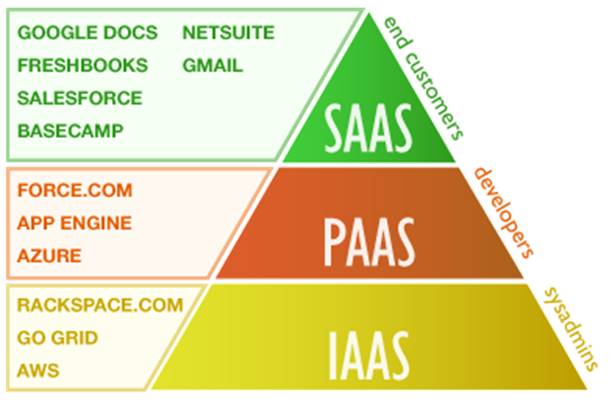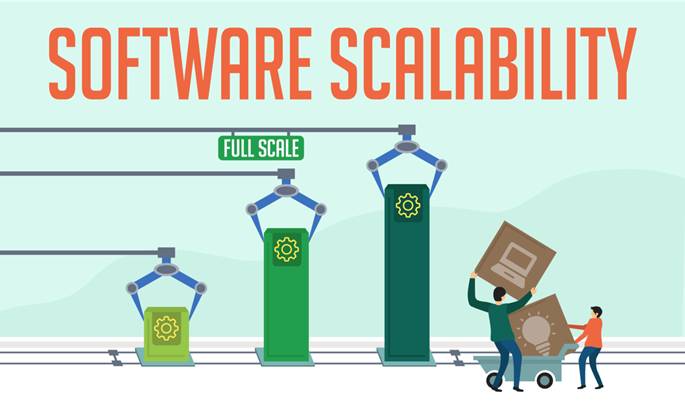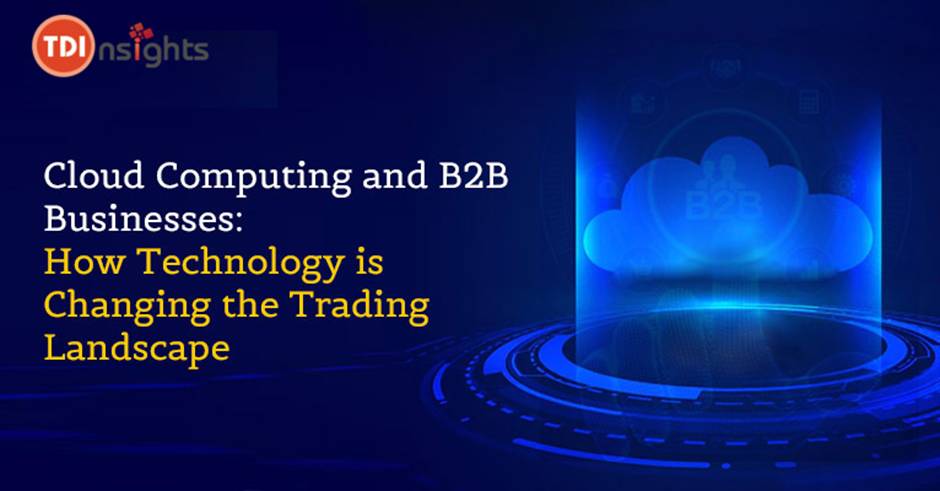While Google suite hit over 2 billion users by the end of 2021, Airbox has over 700 million users today. These statistics are a testament to the popularity of Cloud Computing. B2B businesses have become the most recent contender for Cloud Computing.
Projected to cross $947 billion in 2025, the cloud computing market is a diverse and incredibly valuable development in the era of remote work.
It has strengthened technology stacks and made remote B2B business operations easier. It is also creating newer employment opportunities for software developers and engineers.
Table of Contents
Types of Cloud Computing
There are several private and public cloud computing solutions. These include:
- Data as a Service (Daas)
- Platform as a Service (PaaS)
- Infrastructure as a Service (IaaS)

Source: eztalks.com
Various solutions can be matched, tweaked, and personalized to best meet the demands of a company, depending on the scale and budget of the organization.
Furthermore, recently, there has been a surge of cloud-based mobile apps. This has allowed businesses to interact with clients and partners more directly.
6 Ways Cloud Computing is Helping B2B Businesses
By the spring of 2020, 50% of the entire US workforce had adopted remote working practices. Almost 34% of that population prefers working on the cloud and would change jobs to continue working over it.
Cloud Computing is brimming with opportunities that B2B businesses, new and old, can explore. They are a convenient, customizable, and universally compatible option.
Thus, the cloud can open up a whole new dimension of prospects for B2B clients and businesses alike. Dive in to learn how.
1. Eliminates the Need for Computing Infrastructure

Source: Cloudmachinemanager.com
The most appealing feature of cloud computing for businesses is performing calculations without the need for their own infrastructure. Computing infrastructure was an upper hand for many firms. Companies with their own computing clusters quickly advanced in the sector, causing a slew of issues for their opponents.
For certain video content creators, the extended rendering time was an issue. Video rendering can be completed across devices and networks with in-built cloud applications and take significantly less time to finish.
Users can access resources on AWS, Microsoft Azure, Google Cloud, and other cloud infrastructure by logging into a device or API call. These providers have enormous amounts of computing and storage assets ready to go in data centers worldwide. That is a notable shift for IT teams accustomed to a months-long on-premises buying procedure.
2. Self-Servicing Provisions

Source: Tdwi.com
This feature of cloud applications is quite similar to on-demand computing. Instead of waiting endlessly for the supply of servers to a private data center, marketers can pick and choose exactly the type of technologies that their developer teams need.
An administrator can establish the policies required to limit the power of IT and development teams. These teams can function freely within those parameters, and design, test, and deploy programs as they see appropriate.
Presently, 68% of cloud-focused firms offer self-service access to cloud solutions.
3. Cost-Cutting

Source: Amazonaws.com
Access to the cloud has allowed organizations to cut down on time and money operating their physical hardware. That has resulted in reduced expenses, which is one of the primary benefits of cloud solutions that businesses appreciate.
Previously, every firm was responsible for maintaining its own hardware, including replacing equipment as it became outdated. Businesses were required to pay for the equipment despite not being in use. That was an enormous expense.
Additionally, they even had to employ specialists to assemble and upgrade this set of equipment. Furthermore, these clusters came with additional electricity, security, and bandwidth expenses.
The hardware sector has been transformed by cloud computing. With cloud solutions, businesses only need to spend on computing time.
4. Helps with Scalability

Source: securitymagazine.com
Cloud providers benefit from resource pooling since it allows them to scale. Computing, storage, and networking assets on the cloud can be added or deleted as needed. As a result, IT teams can optimize their cloud-hosted workloads while simultaneously avoiding end-user inefficiencies.
Traditional physical structures do not scale as well. Typically, businesses must plan around peak output season and have the extra resources on standby during slow periods of activity. This may rack up expenses.
Clouds can grow vertically or horizontally, allowing providers to offer end-users automation software to accommodate dynamic scaling simultaneously.
5. Security

Source: securitymagazine.com
Organizations tend to trust cloud computing, with 48% of firms opting to keep their most sensitive and essential data over the cloud. This covers both encrypted and non-encrypted data.
To date, all of the leading cloud platforms have avoided catastrophic breaches. The cloud is a security asset for some of the world’s largest financial institutions.
Communications via the cloud are generally safe, and with advanced security features at their disposal, enterprises should not be concerned about transferring their operations to cloud platforms.
Cloud suppliers often use some of the finest security professionals and are generally more equipped to deal with vulnerabilities than the bulk of corporate IT teams.
6. Omnipresence
 Source: revolutionized.com
Source: revolutionized.com
B2B transactions can now occur on a flexible schedule for everyone involved in a B2B business transaction, regardless of the time zone or geography, thanks to cloud services.
Businesses no longer need to schedule phone conversations or meetings. They can communicate and discuss demands and requirements from anywhere as long as they have an internet-enabled device by sharing access to cloud-based resources.
Cloud computing allows for more integrated operations with far better information exchange between departments and levels, allowing for more seamless B2B collaborations.
Final Thoughts
The cloud has been an incredible asset for all B2B businesses that have integrated it into their operations.
Not only is it a relatively economical investment, but it is also a widely preferred mode of operation and communication and a trusted source of data storage and security.
Cloud Computing is also a valuable asset in scaling a business due to its on-demand features of deletion and update. It stands to provide consistently good end-user results while upholding any scaling goals.
Cloud computing has also flourished with the growing need for remote working technology. It is only a matter of time before the B2B industry familiarizes itself with the wealth of possibilities that the cloud brings with it.





